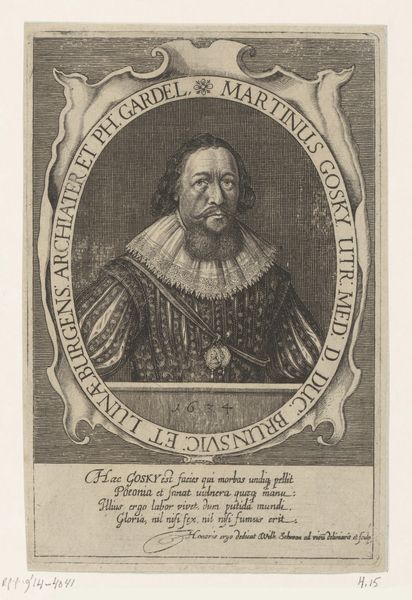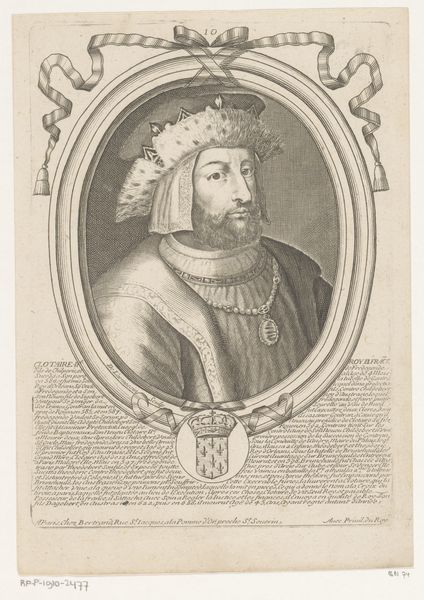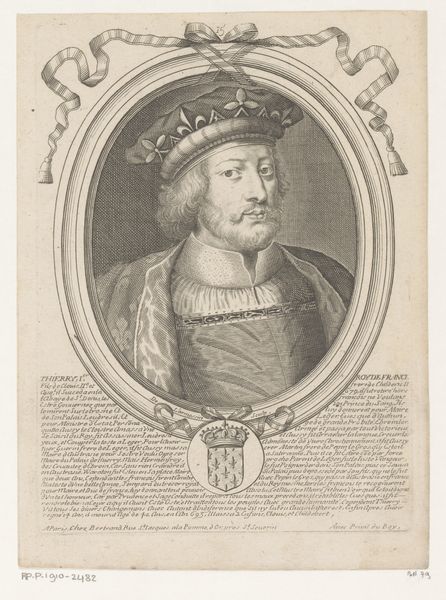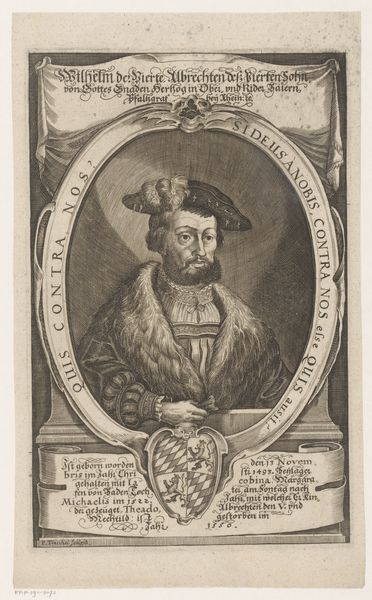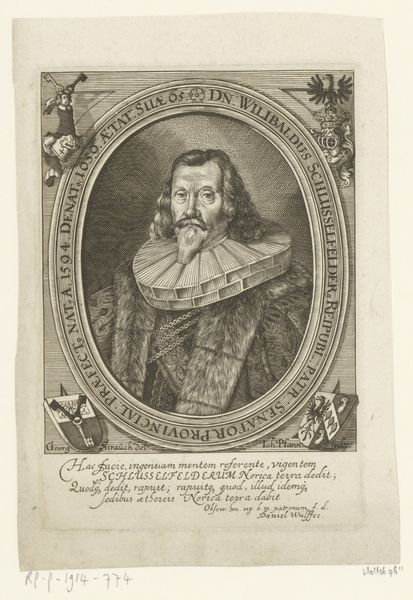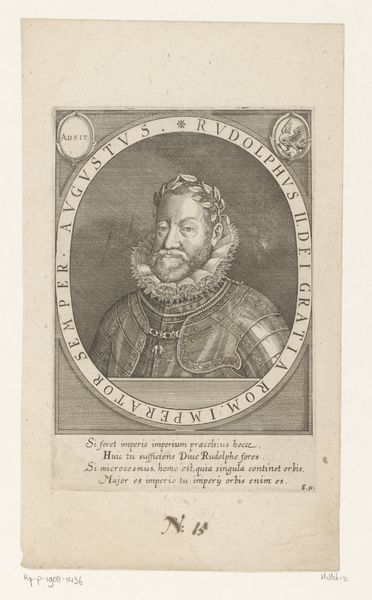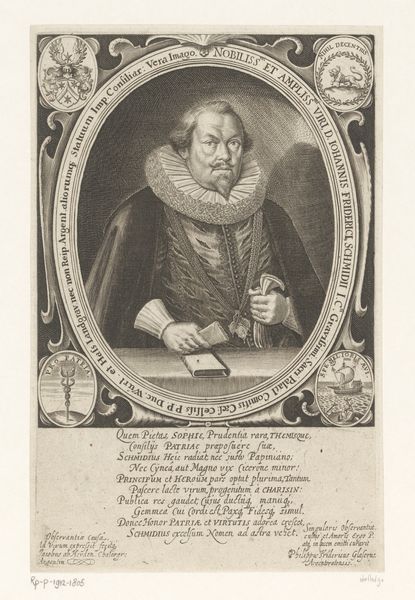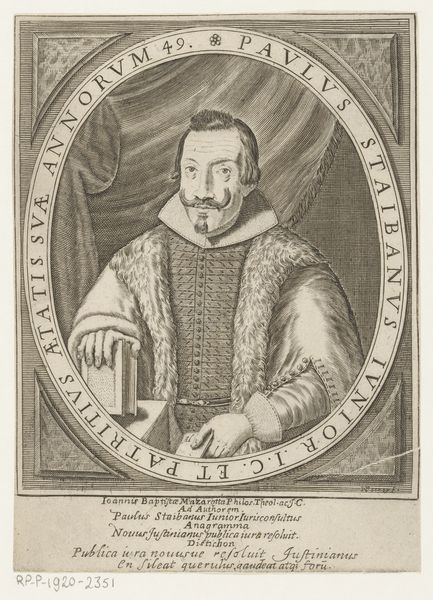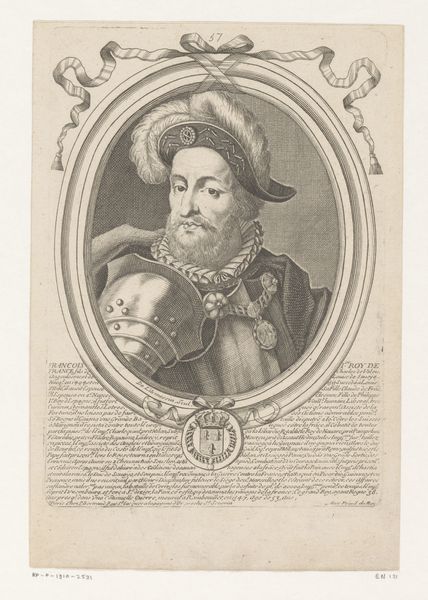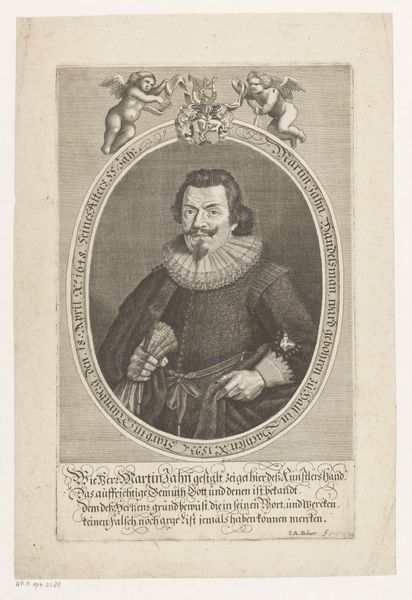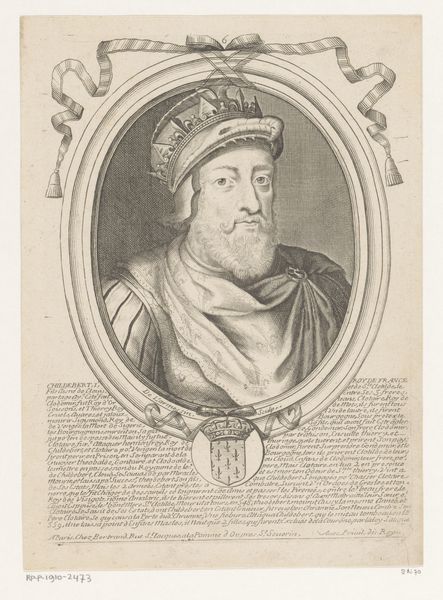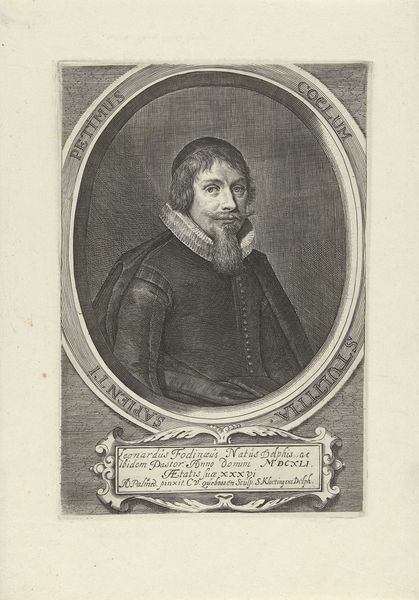
print, engraving
#
portrait
#
baroque
# print
#
old engraving style
#
figuration
#
line
#
history-painting
#
academic-art
#
engraving
Dimensions: height 240 mm, width 174 mm
Copyright: Rijks Museum: Open Domain
Curator: This engraving, "Portret van Childebert II" by Nicolas de Larmessin I, produced sometime between 1647 and 1678, presents an intriguing case study in the consumption of history. The stark lines and detailed rendering immediately strike me as a blend of artistry and industry. Editor: Yes, the sheer amount of tiny, careful marks made to create this portrait is striking. What do you find most compelling about this piece? Curator: For me, it's the layering of processes and contexts. Consider the material reality: We have an engraving, a print intended for relatively wide distribution, depicting a historical figure from centuries before. It wasn’t necessarily about capturing the likeness of this leader; it's about consuming a manufactured image and reinforcing a lineage of power through the medium itself. Editor: So, it's not about the artistic skill, but about how the work's material form circulates ideas. Curator: Exactly! Look at the choice of engraving—a readily reproducible format, allowing for dissemination and popular consumption of imagery relating to monarchy and the elite. And, furthermore, consider the labor involved. Countless hours were poured into producing this matrix for endless copies. Editor: Does the line style, specifically, also tell a story of labor and accessibility, considering its reproducibility? Curator: Precisely! This line style, characteristic of academic art, was intentionally chosen and reflects a codified artistic process aimed at producing aesthetically consistent results efficiently. This ensured a level of standardization and ease of reproduction – essentially aligning the image with mass production capabilities available then. What implications do you think this may hold for understanding concepts such as "high art" at that time? Editor: So, while we might see a king's portrait, you see labor and an emerging form of visual distribution shaping society's ideas about leadership. Curator: Indeed! This changes the perspective to the social consumption of artmaking, shifting how power is produced and observed. Editor: Thanks! Now I see this print with new eyes. I appreciate this materialist lens for interpreting art beyond aesthetics.
Comments
No comments
Be the first to comment and join the conversation on the ultimate creative platform.
